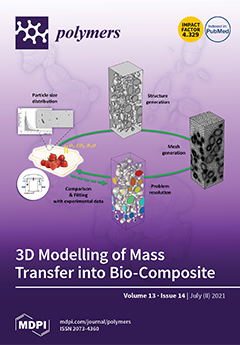Fused filament fabrication (FFF) 3D printing technology allows very complex parts to be obtained at a relatively low cost and in reduced manufacturing times. In the present work, the effect of main 3D printing parameters on roughness obtained in curved surfaces is addressed.
[...] Read more.
Fused filament fabrication (FFF) 3D printing technology allows very complex parts to be obtained at a relatively low cost and in reduced manufacturing times. In the present work, the effect of main 3D printing parameters on roughness obtained in curved surfaces is addressed. Polylactic acid (PLA) hemispherical cups were printed with a shape similar to that of the acetabular part of the hip prostheses. Different experiments were performed according to a factorial design of experiments, with nozzle diameter, temperature, layer height, print speed and extrusion multiplier as variables. Different roughness parameters were measured—
Ra, Rz, Rku, Rsk—both on the outer surface and on the inner surface of the parts. Arithmetical mean roughness value Ra and greatest height of the roughness profile
Rz are usually employed to compare the surface finish among different manufacturing processes. However, they do not provide information about the shape of the roughness profile. For this purpose, in the present work kurtosis
Rku and skewness
Rsk were used. If the height distribution in a roughness profile follows a normal law, the
Rku parameter will take a value of 3. If the profile distribution is symmetrical, the
Rsk parameter will take a value of 0. Adaptive neural fuzzy inference system (ANFIS) models were obtained for each response. Such models are often employed to model different manufacturing processes, but their use has not yet been extended to 3D printing processes. All roughness parameters studied depended mainly on layer height, followed by nozzle diameter. In the present work, as a general trend,
Rsk was close to but lower than 0, while
Rku was slightly lower than 3. This corresponds to slightly higher valleys than peaks, with a rounded height distribution to some degree.
Full article






